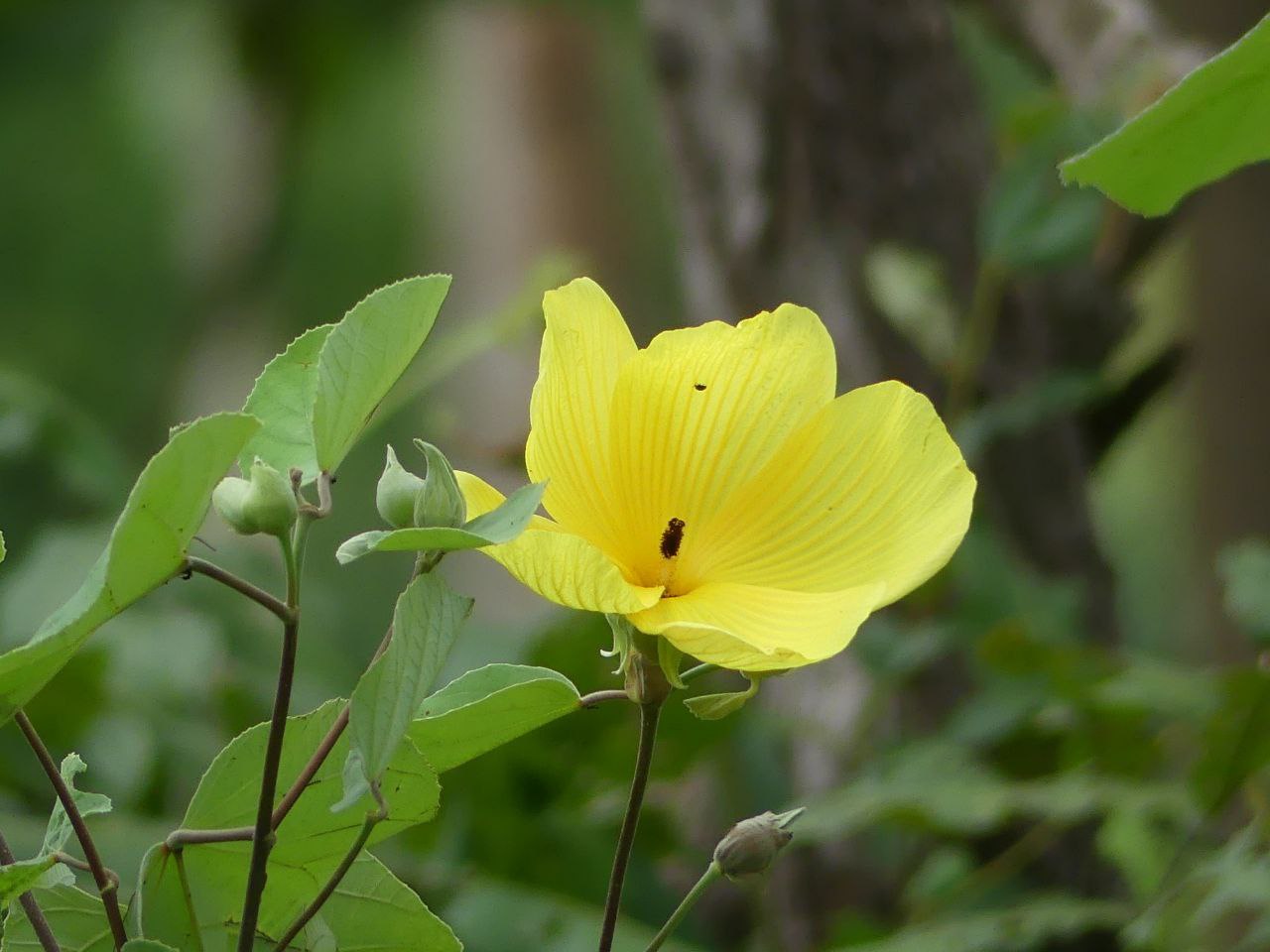Introduction to Cottonwood Hibiscus
The Cottonwood Hibiscus is a striking species of
hibiscus, belonging to the Malvaceae family. It is known for its large,
colorful blooms and its use in traditional medicine, especially in regions
where it grows naturally. While its name evokes the cottonwood tree, Hibiscus
species, including Cottonwood Hibiscus, are more commonly associated with
tropical and subtropical climates.
Cottonwood Hibiscus, also known by its scientific name Hibiscus
laevis, is an indigenous plant native to North America. This species
thrives in wetland environments, particularly in areas like riverbanks, swamps,
and other moist habitats. With its broad leaves, vibrant flowers, and
impressive stature, the Cottonwood Hibiscus is a beautiful addition to any
landscape, particularly in areas where it can be grown as an ornamental shrub.
Geographic Distribution
Cottonwood Hibiscus is native to the United States,
particularly in the southeastern and eastern regions. This species is typically
found in the wild in states such as Mississippi, Alabama, and Louisiana,
growing naturally along riverbanks and in moist, marshy areas. It is also known
to be present in parts of Florida, Texas, and Arkansas. While Hibiscus
laevis is a primarily North American species, its relative species are
found across the globe, from Asia to Africa, with other Hibiscus
varieties commonly used in landscaping and traditional medicine worldwide.
The plant thrives in zones 4 to 9 of the USDA hardiness map,
making it a well-suited addition to temperate climates that experience some
degree of seasonal variation.
Benefits of Cottonwood Hibiscus
The Cottonwood Hibiscus has numerous benefits, both
ornamental and medicinal. While it may not be as widely known as other hibiscus
species, it provides a variety of uses:
1. Ornamental Uses:
- Aesthetic
Appeal: The large, showy flowers of the Cottonwood Hibiscus make it a
popular choice for landscaping, especially in wetland gardens or near
water features. Its striking white or pale pink blooms stand out against
its dark green foliage.
- Wildlife
Support: Its large flowers attract pollinators, including bees and
butterflies, making it an ideal plant for gardeners looking to support
local ecosystems.
2. Medicinal Uses:
- Traditional
Medicine: Cottonwood Hibiscus has been utilized in traditional
medicine by Indigenous groups in North America. It is believed to have
anti-inflammatory, anti-bacterial, and pain-relieving properties. Some
indigenous tribes used various parts of the plant to treat ailments such
as fevers, wounds, and infections.
- Herbal
Tea and Extracts: The leaves and flowers are sometimes used in herbal
teas. These are believed to have soothing properties, helping with
conditions like digestive discomfort, and acting as a mild diuretic.
It is important to note that while traditional uses are
widespread, scientific evidence supporting these medicinal claims is still
limited, and more research is needed to substantiate the plant’s health
benefits.
3. Environmental Impact:
- Water
Management: As a wetland plant, Cottonwood Hibiscus plays a role in
stabilizing soil and preventing erosion in areas with slow-moving water.
It is also able to thrive in areas prone to flooding, thus helping to
manage water flow and prevent soil loss.
Where is Cottonwood Hibiscus Found?
Cottonwood Hibiscus (Hibiscus laevis) is found
primarily in the southeastern United States, particularly in moist and marshy
environments such as wetlands, riverbanks, and swampy areas. Its ideal growing
conditions are areas that are not only humid but also have access to plenty of
water. While it is predominantly native to North America, other hibiscus
species that share similarities can be found in tropical and subtropical
regions worldwide.
It is most commonly found in states like Alabama, Louisiana,
and Mississippi, but can also be spotted in areas with wetland ecosystems
across other parts of the United States. The plant requires a specific type of
environment to thrive—preferably areas with well-draining, slightly acidic
soil, and adequate moisture levels.
Conclusion
The Cottonwood Hibiscus (Hibiscus laevis) is a
versatile and beneficial plant, valued for both its aesthetic appeal and its
potential medicinal properties. Native to North America, particularly in
southeastern states, it thrives in wetlands and moist areas, providing support
to local ecosystems while offering beauty and ecological benefits. While its
medicinal benefits have been recognized in traditional practices, further
research is necessary to confirm these health claims fully.
Sources of Information:
- U.S.
National Library of Medicine, PubMed Central
- Flora
of North America (2009)
- Native
Plant Trust: Hibiscus laevis Profile
- USDA
Plant Database
- Medicinal
Plants of North America by James A. Duke




